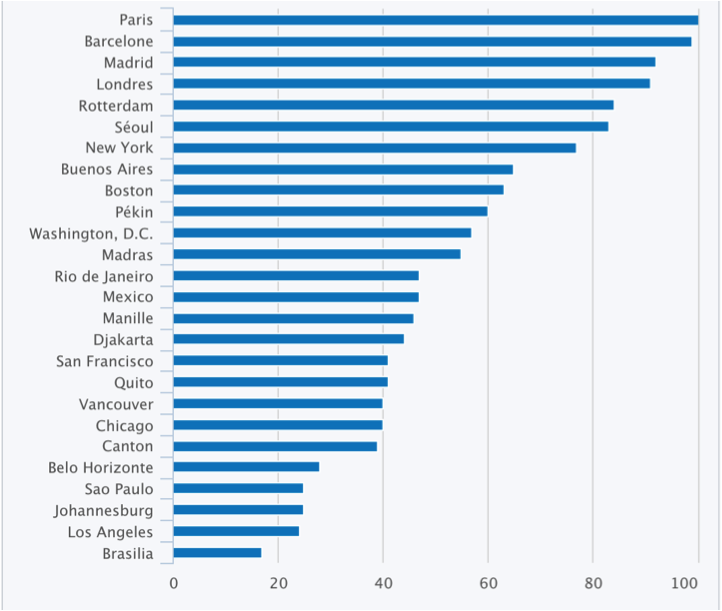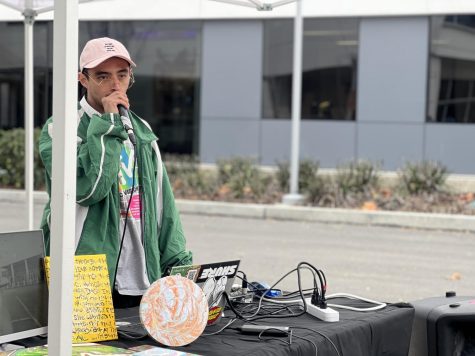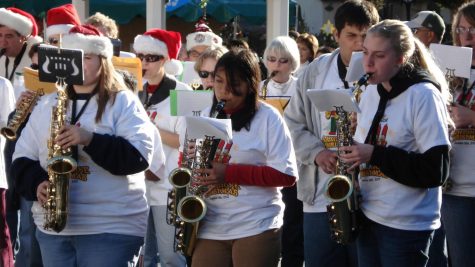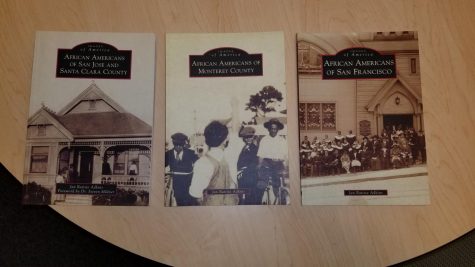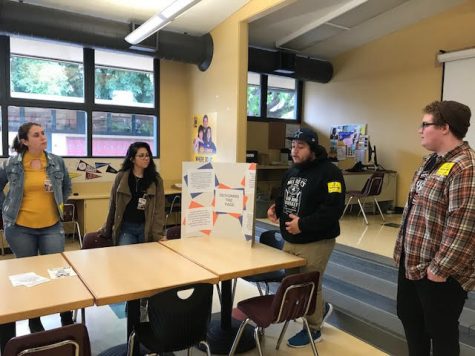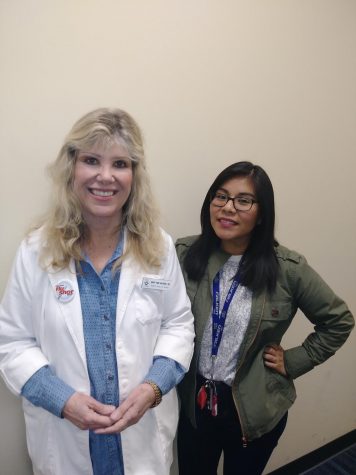How to end up with the hours of commute in Bay Area
Although Silicon Valley struggles with traffic, public transportation is still far behind
Source: Institute for Transportation and Development Policy (ITDP)
In blue: Rate of inhabitants living at less than 1 km from a rapid transit. Cutline: in Paris, 100% of inhabitants live at less than 1km from a efficient public transport; it is 41% for San Francisco inhabitants.
April 19, 2017
American people have a strange love-relationship with their car, and by extension, a strange hate-relationship with public transportation.
Yes, a car is more than just some tons of metal: cars mean freedom, independence, job access … By history, America is a car country, you can’t do anything without a car, you are nobody without a car.
But that’s a chicken-and-egg situation: if public transportation was really good, you could do everything without a car, owning one would be useless.
In Paris, France, nobody lives further than 3000 feet away from a rapid efficient public transport according to the Institute for transportation and development Policy.
On the way to the working district, for a population of 12 millions inhabitants on the Paris Area, the bullet train moves 1,2 million people on weekdays. The frequency is one train every minute during rush hours. According to the French research center Cerema on a 2010 study, only 11% commuters drive in Paris.
In Paris, you know you’ll commute safer, cheaper and faster by public transportation, without mentioning the environmental sustainability and the health benefit of avoiding pollution.
In comparison, according to its website, Caltrain transports 60 000 riders on weekdays across the Bay area for a population of 7 millions inhabitants. That means, in proportion, 10 times less than in Paris Area. During rush hours there is a train every 15 to 20 minutes.
The Caltrain is old, still diesel fuelled (more costly to operate), and objectively slow.
Going to San Francisco from San Jose takes at least 2 hours door-to-door using public transportation while it is 50 minutes drive without traffic.
And when it comes to VTA, despite real efforts worth acknowledging, the schedule is so loose and the travel time so long that nobody capable to afford a car would seriously think about commuting by bus or light train.
On Nov., 2, 2016, a study from the the Silicon Valley Institute for Regional Studies showed that among the commuters on Santa Clara and San Mateo County, 74% drive single, 10% share the drive, only 6% were using public transportation.
The same study revealed that, for the first time in 2016, the number of rush hours (meaning the time when the road system might have congestion) per day was bigger in San Jose than in Los Angeles.
Every big city in the world struggles with public transportation issues.
Back to Paris, the dark side of the story involves a fight between intra-muros and extra-muros inhabitants. The public efforts in regards of public transportation has slowed down the traffic on the roads. The low-income commuters coming from the edges of the region, where train coverage is still lacking, are double punished: they don’t benefit from the excellent transport network and they have bigger commute time when they drive.
But in the Bay Area, there is still so much to do before being concerned about the edges. The Bay Area has the perfect characteristics to offer an excellent transport network.
There are big actual needs.
There is also a favorable geography for transport network: instead of being star-shaped, most of the traffic is one direction north-south. And all the big companies locate in a nutshell. That makes much easier to create a train line solving big part of the traffic problem.
Last point, there is enough money in the valley to build a strong, efficient, fast network.
An offer of quality, which means safe, fast (let’s say less than 30 minutes for a San Francisco-San Jose ride) and regular (let’s say every 10 minutes) would save time to both private and professional workers’ lives, meaning a real gain in productivity for companies.
By the way, the tech companies support strongly the creation of a public network, as well as the authorities and local politicians, both democrats and republicans.
So why doesn’t it happen ?
Why there haven’t been more protests when the federal government in last Feb., 17, by the voice of the new Transportation Secretary Elaine Chao, decided to delay the decision about the 647 millions dollars needed for the Caltrain electrification project?
Closer to our SJCC students concerns, why the VTA decided to cut the offer on the bus lines arriving to City College for next fall?
I can’t help but think the answer is all about symbolism: cars mean freedom in a country where freedom is everything. Cars mean wealth in a country where everyone dreams to be rich.
But stop dreaming and let’s being pragmatic: the Bay Area deserve a great public transport network. It’s time to think that public transportation is the future.
I believe in what Gustavo Petro, the former Mayor of Bogota, Colombia, said: “A developed country is not a place where the poor have cars. It’s where the rich use public transportation.”

